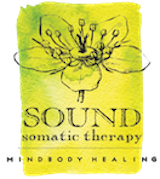5 Simple Activities to Help You Feel Better
So in the first lesson, you practiced looking or listening to what is going on around you. Now we are going to build on that and pay attention to our body in the environment . . .
#2 Feel Yourself Sitting in the Chair
While we traditionally think of just five senses (seeing, hearing, smelling, tasting, touching), there are other senses in the body. Two of these are proprioception and equilibrioception. If being aware of our environment helps us feel safe, then it makes sense that being aware of our own physical relationship to our environment will do the same. That’s what proprioception and the vestibular system do. (The vestibular system manages our sense of equilibrioception).
The homebase of the vestibular system is the inner ear. The fluids there move when our heads move and send messages to the brain about what’s happening. This information from the inner ear is coordinated with information from the eyes and from the muscles in the body to let us know where we are in relationship to gravity. With this information, the vestibular system then lets our muscles know what to do to keep us upright (if that’s where we want to be). This system works in conjunction with our system of proprioception, which senses what position the body is in. It gathers data from throughout the body, especially the joints, so that you can tell whether your arm is raised above your head or down by your side, even if your eyes are closed. Sometimes proprioception is defined as knowing where your body is in space.
So this lesson could be called “Orient to the Environment, Part 2,” as we are turning our attention to our relationship with gravity and space. This involves certain kinds of body awareness. If you are thinking, “But I don’t have good body awareness,” don’t worry, you can develop it. When we have a sense of where our body is, we have a better idea of what it will take to respond to a something dangerous (we don’t do this on a conscious level, it’s more that the body and brain know what to do). While most of us aren’t actually in dangerous situations all the time, the number one instinct for humans and other animals is survival. When we feel capable of surviving, we feel better.
Enough of all this fascinating information. Let’s get to activity #2.
Turn your attention to the chair (or couch or whatever you are sitting on). See if you can feel the places where your body is touching the chair. Try to feel where there is more pressure or less pressure. You can also feel your feet on the floor. If this is difficult, try moving a little, perhaps rocking your feet on the floor or rocking your body a little side to side or gently pressing your back into the chair and then releasing. You might experiment with relaxing into the chair and then pressing into the chair to lift up through the upper body. It might be helpful to name what you are noticing like you did in Lesson One or you may enjoy feeling your body in the chair without any words or labels.
Now you might notice more about how your body is sitting. How are your legs and feet positioned? Are they crossed, turned, bent . . . ? How about your hands and arms? Are they in your lap, touching each other, extended . . . ? Are you leaning in any direction? Is your head leaning or turned? These are just some questions to get you started. All you are focusing on is the position of your body (something, I might add, that most of us don’t probably focus on very often). If it seems hard, you might look at your body and see how it’s positioned, then try to feel it. At some point, you might see if you can sense your body position with your eyes closed.
An added element would be sensing the space around you. Can you feel the space to your sides, behind you, above you? There is no judgment if any of this is hard for you. See if you can bring your curiosity and don’t worry if you aren’t getting it right away.
Just like with the first activity, you might use this as a little check-in any time during the day. If you are feeling upset in any way, you might especially focus on feeling the support that the chair and the floor are giving you. I often use a combination of these first two practices (Orient to the Environment and Feel Yourself Sitting in the Chair) when I am having trouble falling asleep. I hear sounds and feel myself in the bed, the sheet or blanket over me, the pillow under my head, the position of my body lying on the mattress.
I have made some short recordings guiding these exercises and others. Click here to listen. (tracks #2 and #6 guide you through the exercises described on this page)

